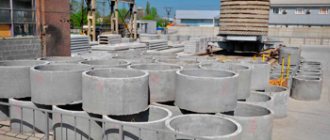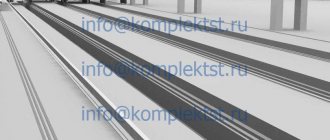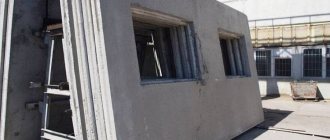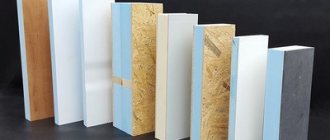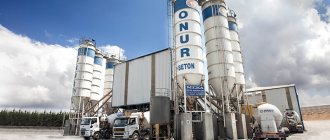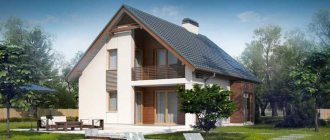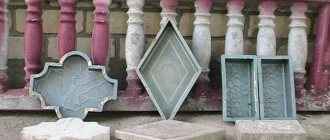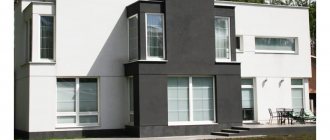In this article we will look at the technology for producing reinforced concrete products on an industrial scale, and in addition we will determine what methods of casting reinforced concrete products are used in individual construction. But, before considering the technological features, we will talk about the main properties of reinforced concrete.
Production workshop for the production of reinforced concrete products
Our advantages:
| 1. Own production | 5. Personal sales employee |
| 2. Available in stock | 6. We work without intermediaries |
| 3. Quality (compliance with GOST) | 7. Reliable and experienced partner |
| 4. Factory warranty | 8. Delivery by our own vehicles |
Features of the production of solid flat, ribbed and curved slabs and panels
Flat, ribbed and curved slabs and panels, depending on the capacity of the enterprise, the equipment used, the size of the products and other local conditions, are manufactured with stationary flow, as well as continuous and discontinuous flow (bench, unit and conveyor) production organization.
In stationary-flow (bench) production, when compacting mixtures by vibration, conventional stands and special installations designed by Giprostroyindustry are used, consisting of matrices with folding sides, lifting frames with pins for stressed reinforcement and special concrete pavers. To supply steam, the matrices have cavities and the possibility of condensate removal is provided.
To form ribbed slabs and panels using vibration stamping, stands designed by NIIZhB and Giprostroyindustry are used.
Thin-walled curved panels and double-curvature panels, used to cover industrial buildings, are manufactured using bench technology on insulated reinforced concrete matrices using a molding machine (see figure below). The operating principle of the machine is to continuously form panels using a sliding vibrating template method. The concrete mixture from the hopper falls onto the surface of the reinforced concrete matrix, creating a seal that prevents the rest of the mixture from flowing out. As it moves forward, the rear wall of the hopper profiles the mixture and cuts off excess mixture, and the remaining layer of concrete on the matrix is compacted to a given thickness using a vibrating template. When the machine moves along the rails laid on both sides of the matrix, the hopper and template move along the side guides of the matrix, repeating their curvature. Thanks to this, longitudinal and transverse profiles of the panel are formed and products of a given thickness are obtained.
| Installation for molding curved covering panels |
| 1 - vibration template, 2 - counterweight, 3 - hopper, 4 - lifting mechanism, 5 - travel drive, 6 - machine portal, 7 - reinforced concrete matrix, 8 - guide, 9, 10 - support rollers, 11 - guide carriage |
The operating speed of the machine with the vibrators turned on, located inside the vibration template, is 0.5 m/min. The surface of the product is smoothed at high speed. The lifting of the hopper and vibration template, necessary when moving the machine from matrix to matrix, is carried out by a lifting mechanism using cables. The panels are molded in reinforced concrete matrices of a prefabricated monolithic structure. At the ends of the matrix, removable metal panels are installed, forming the formwork of the transverse ribs of the panels.
In the production of thin-walled curved panels, only a rigid concrete mixture is used, which, when vibrating, does not slide along the slope of the matrix. During steaming, the matrix with the product is covered with a special box. Before the panel is removed, two mounting lugs are bolted to the panel, which are used to remove the panel from the mold and install it. This allows the production of panels without mounting loops.
In direct-flow (aggregate) technology, conventional and tipping molds are used with compaction of the mixture on vibrating platforms. In Fig. Below is a workshop for the production of structures for industrial construction with a capacity of 30 thousand m3 per year (409-10-15). The production of products is carried out in molds and on pallets at two stations, each of which is equipped with a vibrating platform SMZh-200A with a lifting capacity of 15 tons, a longitudinal forming machine SMZH-153 and a concrete paver SMZH-162. The span is equipped with two overhead cranes with a lifting capacity of 15 tons with automatic grippers SMZH-46.
| A typical workshop for the production of structures for industrial construction with two molding stations 3000x6000 mm: |
| a - technological diagram, b - plan: 1 - self-propelled trolley for transporting finished products with a lifting capacity of 20 tons, 2 - trailer trolley, 3 - electric overhead crane with a lifting capacity of 15 t, 4 - dispensing hopper, 5 - concrete paver, 6 - vibrating platform with a lifting capacity of 15 t, 7 — longitudinal mold stacker with a lifting capacity of 15 t, 8 — steaming chambers, 9 — installation for electrothermal tension of rods, 10 — molds, 11 — welded fittings, 12 — stand for inspection and repair of products, 13 — stand for assembling insulated panels, 14 — storage area for finished products, 15 — post for stripping and assembling molds, 16 — rack for storing rods |
The technological process is as follows. the stripped form or pallet is cleaned and lubricated using a sprayer connected to the centralized lubricant supply line. When producing prestressed products with rod reinforcement, the latter is prestressed using an electrothermal method using the SMZh-129 (6596C/2) installation and secured to the pallet. In the manufacture of conventional products, a reinforcement frame and embedded parts are placed in a pallet or mold, after which the mold or pallet is transferred by an overhead crane to a mold stacker, where beading equipment is installed on the pallet. Using a mold stacker, the form or pallet is fed to a vibrating platform and is automatically fixed on it.
When producing flat products, operations at forming stations are automated. In all other cases, the molding process is controlled remotely. The supply of concrete mixture to the forming stations is carried out from the intermediate overpass using self-propelled dispensing hoppers SMZh-1 (6611) with a capacity of 1.8 m3 directly into the bunkers of the concrete spreaders.
Reinforcement frames in finished form are supplied from the reinforcement shop to the location of the formwork and reinforcement laying posts. An installation for electrothermal tension of rods is also located there. After molding the products, the side equipment is removed by crane and the pallet with the product is transported to the heat and humidity treatment chamber. Pit chambers are equipped with devices with automatically operating brackets SMZH-293, which, depending on the type and height of the products, make it possible to install the products in 4-6 tiers. The use of chambers with different numbers of tiers requires readjustment of the guide posts depending on the products being manufactured. After heat and humidity treatment, the products are removed from the chambers by crane and transferred to the formwork and mold assembly stations. Stripped products undergo inspection.
When producing three-layer insulated panels, they are assembled on a bench. The panel shells are tipped with the edges up using an overhead crane, and the shells are connected to each other by electric welding. Defects discovered during this process are eliminated, the products are marked and, after curing, they are loaded by an overhead crane onto a self-propelled cart with a trailer and transported to the finished product warehouse. In winter, the products are kept in the workshop for 4 hours.
A similar line for the production of wall panels and coverings of industrial buildings in a standard workshop (409-10-16/72) with two stations intended for the manufacture of products with a width of 1500-3000 mm and a length of 12000 mm includes: vibrating platform SMZh-199A with a lifting capacity of 24 t, concrete paver SMZh-162, form layer SMZh-35A, installation for tensioning reinforcement SMZh-84, pit steaming chambers. The span is equipped with overhead cranes with a lifting capacity of 30/5 tons with automatic grippers SMZH-50.
Technical and economic indicators of workshops for the production of wall panels and coverings for industrial construction are given in the table:
Technical and economic indicators of the production of panels, walls and coatings for industrial construction
| Indicators | Standard project code | |
| 409-10-15/72 | 409-1016/72 | |
| Production capacity during two-shift operation, thousand m3 | 30,0 | 40,0 |
| Number of production workers, people | 35 | 35 |
| Output per production worker during molding, m3/year | 1060 | 985 |
| Removal from 1 m2 of production area, m3/m2 | 15,0 | 16,0 |
| Metal consumption of process equipment, kg/m3 | 11,7 | 12,44 |
| Specific costs for technological needs for the molding span: | ||
| — electricity, kW∙h/m3 | 3,9 | 3,6 |
| — steam, kg/m3 | 265 | 315 |
| — compressed air, nm3/m3 | 3,3 | 3,6 |
| — labor costs, person∙h/m3 | 1,92 | 1,93 |
The molding of products of this type in continuous and discontinuous flow (conveyor) production is carried out on rolling mills and two-tier conveyor lines with a forced rhythm (see figure below). The latter are characterized by the most advanced equipment.
| Scheme of a two-tier trolley conveyor |
| 1 - calibrating device, 2 - profiling vibration stamp, 3 - concrete paver, 4 - machine for winding reinforcement, 5 - rolling pallet, 6 - vacuum lifter, 7 - heat-moisture treatment chamber, 8 - steam pipeline, 9 - lift-lower, 10 - hydraulic pusher |
- Concrete science
- Manufacturing technology of prefabricated reinforced concrete structures and parts
- General issues in precast concrete production
- Preparation of concrete mixtures
- Production of mortar mixtures
- Transporting concrete mixture
- Preparation of reinforcement
- Formwork
- Preparing molds, forming concrete and curing products
- Reinforcement and forming of prestressed products
- Features of the production of various types of concrete and reinforced concrete products
Production of block and linear structures - Production of solid flat, ribbed and curved slabs and panels
- Production of hollow flooring and panels
- Production of pipes, communication line supports, lighting networks and power transmission lines
- Production of products using the cassette method
- Production of reinforced concrete products using the method of continuous and power vibrorolling
- Concreting of various structures
- Concrete work in winter conditions
- Production of prefabricated structures and parts from lightweight concrete
- Production of prefabricated products from dense silicate concrete and concrete with clinker-free binder
- Production of concrete and reinforced concrete products at landfills
- General safety rules and fire prevention measures at a construction site
PKF StroyGroup assortment
We produce the following range:
- curbstone;
- paving slabs;
- wells;
- concrete rings;
- pipes;
- trays;
- slabs;
- floor slabs;
- building components;
- oil and gas construction;
- road improvement
- Rings and wells
- Pipes
- Reinforced concrete trays
- Landscaping
- Construction of roads and bridges
- Components for buildings and structures
- Oil and gas construction
- Reinforced concrete slabs
We are constantly expanding the capabilities of the plant, trying to cooperate mutually beneficially with other enterprises in Moscow and the Moscow region, providing consultations on production optimization, and jointly solving industry problems.
How to place an order
| 1. Submit your application. Call +74952302418 or write to us | 3. Payment of the bill. Pay or get a deferment. |
| 2. Agree on cost and timing. The plant manager will agree on the production time for the application and issue an invoice. | 4. Delivery to the site. On time, receive the products with delivery to your site. |
Quality certificates
The most important aspect of production is the quality of the products: our products and building materials are manufactured under the strict control of technologists and engineers in accordance with GOST.
Reinforced concrete processing
During repair work - from moving door and window openings to laying electrical wires - you have to deal with cutting and drilling reinforced concrete. Since this material is extremely durable, special methods are used to process it.
Oxygen-lance method
The tool is a metal pipe of the appropriate diameter. It is heated using a welding unit or torch, while oxygen is supplied to the pipe itself. The device is pressed forcefully into the wall, and the hot iron and oxygen melt the concrete.
Sometimes oxygen is supplied with metal powder - this speeds up the cutting process. This option is considered the most economical, but at the same time labor-intensive and dangerous - oxygen can catch fire.
We will explain below what ultrasonic cutting of reinforced concrete consists of.
Waterjet cutting
Sometimes it is called cold, since heating is excluded here. Cutting is carried out with a jet of water under pressure. Water is supplied with abrasive particles.
By adjusting the water pressure, you can free the block from concrete while preserving the metal frame. You can cut any blocks from reinforced concrete.
The method is completely safe and does not create noise or vibration. The main advantage is high speed. However, the volume of the installation for waterjet cutting allows the method to be used only in large rooms.
Read on to find out what equipment is needed for diamond cutting of reinforced concrete, such as discs and ropes.

